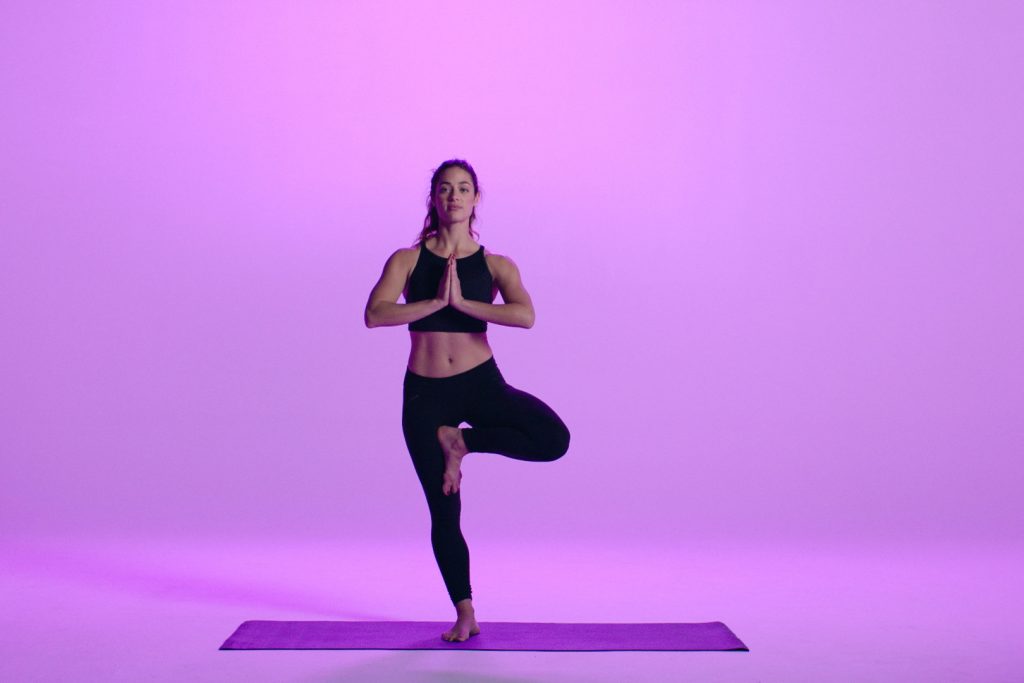It’s time to roll out your yoga mat and discover the combination of physical and mental exercises that for thousands of years have hooked yoga practitioners around the globe. The beauty of yoga is that you don’t have to be a yogi or yogini to reap the benefits. Whether you are young or old, overweight or fit, yoga has the power to calm the mind and strengthen the body. Don’t be intimidated by yoga terminology, fancy yoga studios and complicated poses. Yoga is for everyone.
· 10 Yoga Poses You Need To Know
The building blocks of yoga are poses. These are good ones to learn as you build a regular yoga practice. These 10 poses are a complete yoga workout. Move slowly through each pose, remembering to breathe as you move. Pause after any pose you find challenging, especially if you are short of breath, and start again when your breathing returns to normal. The idea is to hold each pose for a few, slow breaths before moving on to the next one.
1. Child’s pose
This calming pose is a good default pause position. You can use the child’s pose to rest and refocus before continuing to your next pose. It gently stretches your lower back, hips, thighs, knees and ankles and relaxes your spine, shoulders and neck. Do it when you want to get a nice gentle stretch through your neck spine and hips, skip it if you have knee injuries or ankle problems or if you have high blood pressure or are pregnant.
2. Downward facing-dog
Downward-facing dog strengthens the arms, shoulders and back while stretching the hamstrings, calves and arches of your feet. It can also help relieve back pain. Do it to help relieve back pain, skip it if you have carpal tunnel syndrome or other wrist problems, have high blood pressure or are in the last stages of pregnancy.
3. Plank pose
A commonly seen exercise, plank helps build strength in the core, shoulders, arms and legs. Do it if you are looking to tone your abs and build strength in your upper body, skip it if you suffer from carpal tunnel syndrome. It can be hard on your wrists. You might also skip it or modify if you have low back pain.
4. Four-Limbed Staff Pose
This push-up variation follows plank pose in a common yoga sequence known as the sun salutation. It is a good pose to learn if you want to eventually work on more advanced poses, such as arm balances or inversions. Do it to strengthen arms and wrists and tone the abdomen, skip it if you have carpal tunnel syndrome, lower back pain, a shoulder injury or are pregnant.
5. Cobra Pose
This back-bending pose can help strengthen the back muscles, increase spinal flexibility and stretches the chest, shoulders and abdomen. Do it for strengthening the back, skip it if you have arthritis in your spine or neck, a low-back injury or carpal tunnel syndrome.
6. Tree Pose
Beyond helping improve your balance, it can also strengthen your core, ankles, calves, thighs and spine. Do it for balance and posture, skip it if you have low blood pressure or any medical conditions that affect your balance.
7. Triangle Pose
Triangle, which is a part of many yoga sequences helps build strength in the legs and stretches the hips, spine, chest, shoulders, groins, hamstrings and calves. It can also help increase mobility in the hips and neck. Do it for building strength and endurance, skip it if you have high blood pressure, turn your head to gaze downward in the final pose. If you have neck problems, don’t turn your head to look upward; look straight ahead and keep both sides of the neck long.
8. Seated Half-Spinal Twist Pose
This twisting pose can increase the flexibility in your back, while stretching the shoulders, hips and chest. It can also help relieve tension in the middle of your back. Do it to release tight muscles around the shoulders and upper and lower back, skip it if you have a back injury.
9. Bridge Pose
This is a back-bending pose that stretches the muscles of the chest, back and neck. It also builds strength in the back and hamstring muscles. Do it if you sit most of the day, this pose will help you open your upper chest, skip it if you have a neck injury.
10. Corpse Pose
Like life, yoga classes typically end with this pose. It allows for a moment of relaxation, but some people find it difficult to stay still in this pose. However, the more you try this pose, the easier it is to sink into a relaxing, meditative state. Do it always, skip it if you don’t want to have a moment’s peace.

Comment here